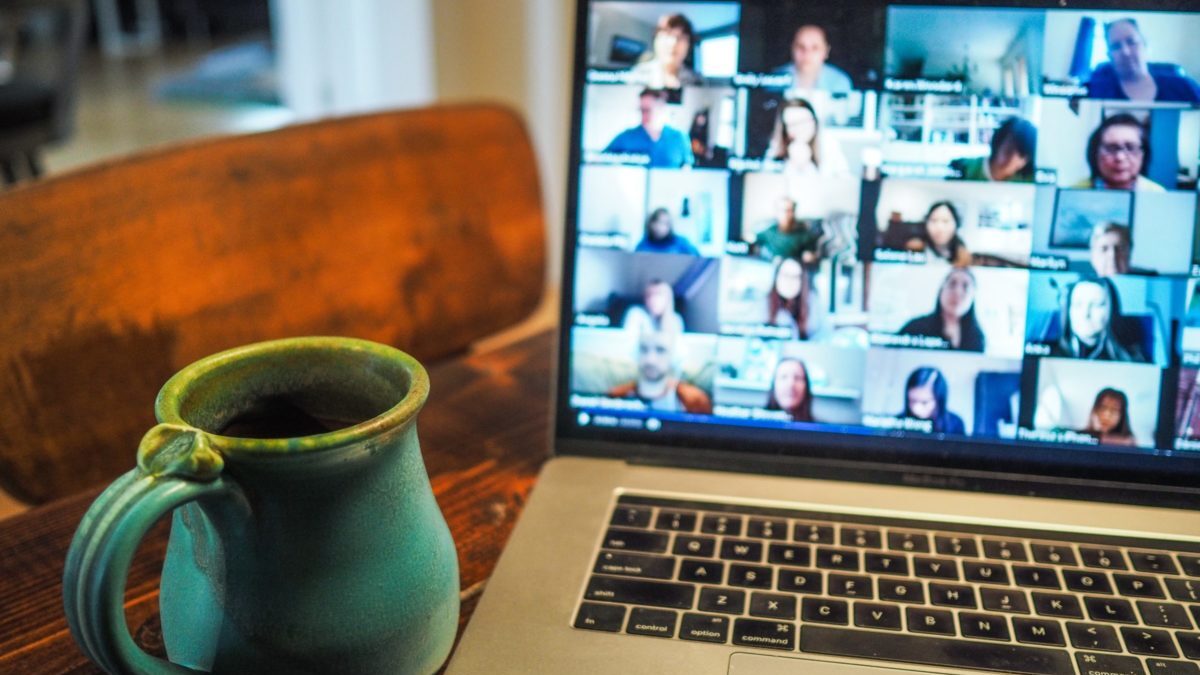The physical and geographical distancing required during the COVID-19 pandemic is challenging our personal and business boundaries like never before in modern history. There is no one specific business sector that is immune to the damaging effects of this situation. The world of health care is one such industry. Yet, at the same time, there are opportunities to use this time as a chrysalis, evolving our brands and businesses to emerge stronger. There is much to consider in order to do this and it begins with each of us as agencies and partners alike.
Just like the virus itself, a whole new type of separation anxiety is adding layers of complexity to just about everything. We have been forced to distance ourselves from one another at work and among our closest friends and families.
Separation flies in the face of the human condition. Philosopher Thomas Hobbes suggested that one of our natural states is “together,” particularly in the face of adversity. Under threat, humans tend to band together for protection and tackle a common challenge. Especially, in an industry charged with solving problems of all shapes and sizes like health care, where unique delivery, collaboration and innovative thinking are needed to hatch strategies to achieve client goals. And the creative process that enables this to happen is proven to function at its best, when we all feel safe and connected together. We see this manifest in all manner of ways from sport to political conflict, but this unique situation presents a whole new conundrum – learning how to be together – while apart.
Michelle Rene, VP of Creative Strategy in NATIONAL’s Vancouver office (our AVENIR GLOBAL partner agency) says, “Our biggest challenge, is connecting without connection.” As humans, this is truly confronting. I came across the term ‘psychological safety’ a couple of years back when researching the concept of safe havens that enable greater creativity to prosper. We feel safe, when there is certainty, reverence, a sense of value and most importantly – trust.
Head of Industry at Google, Paul Santagata says, “There is no team without trust.” Google’s comprehensive two-year team performance study demonstrated that the single characteristic in common among each of the highest performing teams was – psychological safety. These teams work in an environment that suspends judgment, demonstrates value toward one another, reveres moderate risk-taking and creativity without the fear of being shut down.
However, we now live in the COVID-19 era where we’re distanced from one another socially as well as professionally, which presents a whole new challenge – building and perpetuating trust and staying truly connected in a world where we can’t physically be together. This is why there is no more important time to foster creativity and think outside the box than during a crisis. Particularly in the health care industry, we need to look at new ways to connect to patients, professionals and care givers. While we all crave the chance to be close to one another again spit-balling ideas in a room, let’s embrace necessity and do together different for a while. It would appear it’s actually teaching us something – and your team, work, business and brand will be better for it.
Barbara L. Fredrickson, Ph.D., Kenan Distinguished Professor in the Department of Psychology and Neuroscience at the University of North Carolina at Chapel Hill suggests that not only do positive emotions like inspiration, curiosity and trust have the ability to open our minds, they can increase humor, solution-finding and divergent thinking — the wonderful cognitive process at the root of creativity.
It all begs the question, in the COVID-19 era, how do we build and maintain professional, human, empathetic ecosystems where creativity thrives? How do we enable a sanctuary where people feel safe, valued and empowered to think outside of the box in new ways that even those in the health care industry are new to?
That was certainly hard enough in the good old days of 2019, but one of the great cultural ironies is, the very same thing that’s keeping us apart is focusing us as individuals and teams, forcing us to let go of old behaviors and rethink how we make the world work – because it has to. It is pretty safe to assume that a reversal to some kind of norm is not in our near future – and we need to embrace that as a positive.
Finding ways to tackle new challenges in an era that no one could have predicted, including strategizing how to continue to provide important health safety messages in a time where COVID dominates all conversation and adjusting how messages are reached to account for new circumstances patients may now face.
Historically, there have been few catastrophes of such global magnitude, so for greater perspective I reached out to other CCO’s, ECD’s, CD’s and creative agency owners to get some deeper insight and sentiments related to this global phenomenon. If there has ever been a demonstration of how matrixed the planet is, it is this crisis. And in the same way has allowed for great ideas to be enabled because of a wide and diverse perspective – leveraging learnings and solutions from across the globe is how we will make it through this enormous challenge.
From Australia to the U.K., from Singapore to Canada, stories may vary, but the themes are consistent. People are exhausted, businesses are stressed, and we need to be producing work that is smarter and more effective than ever. Nearly everyone I spoke with noted that they are also seeing welcomed, positive behavior emerge and many people who wouldn’t normally collaborate naturally have found it easier to get on a Teams call with someone new in the agency.
In the past three months, I have witnessed teams be more honest, direct and empathetic than ever before. This refreshing demonstration of positivity in the face of such a challenge is a powerful weapon for us, but it still holds true that it takes work – different and hard work to perpetuate. The forgiveness and suspension of judgment in recent months has allowed fresh perspectives on how other areas of health care still play a role when the priority is focused on COVID-19 and encouraged greater curiosity and conversation on looking at the bigger picture of what health care will look like in the coming years. This has allowed even more dynamic thinking and the same energy has been into much deeper, more emotional places with the activity following the murder of George Floyd.
Matt Eastwood, Global CCO of McCann Health shared what he has witnessed. “Perhaps the biggest challenge has been client cautiousness and the agency’s nervousness to ‘rock the boat’ too much. Everyone has been trying very hard to be conscientious and kind partners. But, now that this is very much the next normal, we needed to remind ourselves and our clients to keep pushing for standout creative work. Once again, it needs to be OK to have robust conversations about the work.”
So, how do we keep that torch burning for great thinking in these times? None of us have all the answers, but here are a handful of things to remind ourselves of to keep things positively geared.
Two ears. One mouth.
An oldie but a goodie, it’s never been more important to listen twice as much as we speak.
Some would suggest I must do a lot of listening.
Be considerate (and kind)
This one is pretty simple and blindingly obvious. At Padilla we call it, “Walk In Their World.” Compassion, discretion and empathy are enormously powerful weapons. Fire at will.
Turn your curiosity up to 11 – then 12.
If we could each learn one new thing in every conversation, imagine over time what we’d all know together. Entering situations with an inquiring mindset welcomes other minds into the engagement. As Sir Ken Robinson says, “Curiosity is the engine of achievement.”
Lock arms, hearts and minds.
This is the essence of “Work Brave,” another Padilla Shared Belief Enabling more open connection with clients as whole teams lets us shine light on possibilities together. Take client calls with your brand, insights, creative or digital partner. Take advantage of all the amazing brains we have.
Turn on your camera.
In the book “Silent Messages,” Dr. Albert Mehrabian discusses the relative importance of verbal and nonverbal messages. He suggests when it comes to discussing things of an emotional and personal nature, messaging can be 7 percent verbal, 38 percent vocal and 55 percent visual.
Let Creativity be a verb.
Creativity is an action, not an inanimate thing. Trust the process. Encourage one another to explore thoughts and concepts together. Discovery is not a frivolous endeavor. Our ever-changing world demands we unlock our minds more than ever. There are medical experts world-wide we are currently relying on to do just that.
Tell your story – stop listing the facts.
We are regulated to the eyeballs, but that should not stop us unlocking the power of human stories. More than ever people need to connect to what is possible in a sincere and meaningful way. Nobody can say for certain where we are all headed, but all of these prompts can be used as little reminders as we strive to build safe, new and inclusive teams, navigating the path forward together. We most certainly need to look back and learn from what has been, but more importantly, amidst this chaos we need to be prospective – we have to change the game.
Check in – not out.
Don’t wait to hear how you did – inquire. You can’t reach out to check in on each other and your client partners enough.
Not everyone is experiencing these times exactly the same way. Nor is everyone comfortable with being challenged or encouraged to embrace the change that is transpiring, but this a rare and unique chance to shake things up. With long and challenging roads ahead of us, we are going to need all the energy and camaraderie we can muster to deliver the kind of game-changing thinking our client’s businesses and communities need to survive, prosper and emerge stronger than before.
For more insights on communication and brand strategy, industry trends and more, subscribe today to the Weekly Buzz here.

